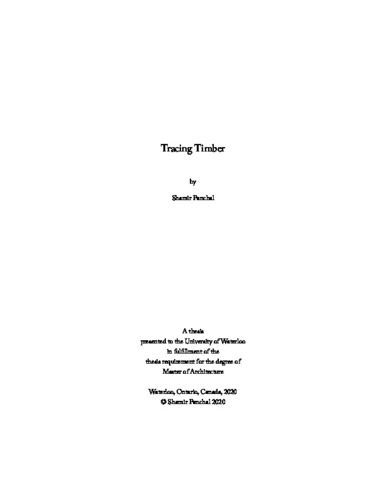| dc.description.abstract | Today, the big box store is where we buy our wood, but not long ago the wood that we used for the structures, finishes and furniture for our buildings might have been harvested locally from a nearby forest or even the building site. We might have been familiar with the trees growing nearby and how they could be used in craft and construction. We may have been the ones to fell, season, mill and craft the wood into our designs. Today, this close engagement with the material is rarely the case and the full life cycle of timber is increasingly difficult to observe and understand, with trees being harvested in remote forests, wood trade occurring globally and milling and craft becoming increasingly automated. This growing separation between us and the life cycle of timber is problematic. It means we relinquish an embodied understanding of the materials we use, and the places and ways in which they grow, thrive and die. It means we cannot begin to ask questions about the relationship between the wood we craft with and the trees that we experience in our cities and forests.
This thesis is an attempt to retrace the life cycle of local wood from the forest, to the sawmill, workshop, and into our homes. It takes the form of a series of exercises, site visits and built projects which opened me to the rich world of textures, colours, and experiences within our reach in the Cambridge region. It suggests how a close engagement with timber materials throughout the education of architects might foster a renewed sense of responsibility and stewardship towards the places and natural systems in which we live and build. | en |

